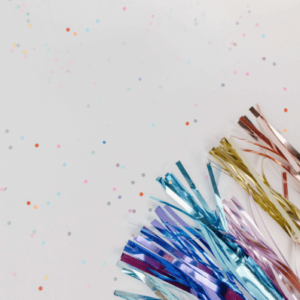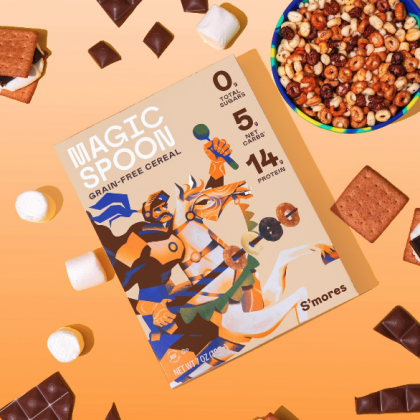My mother wasn’t a “health nut,” but she didn’t buy sugary cereals.
Still, I understood the feeling of sitting in front of the TV with breakfast and cartoons on a lazy Saturday morning. Lots of us do. And at the end of our most stressful weeks, we probably would like to recreate that magic.
Several DTC brands are trying to do exactly that: Promise the magic of Saturday morning but without the sugar for a generation of young, health-conscious consumers.
We’ve already described the pressures impacting the legacy brands — Kellogg’s, General Mills — in the cereal world. These DTC upstarts are out to carve a new path to an adult consumer. In this Mystery Shopper article, we’re taking a close look at Magic Spoon — the most prominent of the new cereal DTC brands.
What Magic Spoon Sells
Physically, Magic Spoon sells boxes of sweet-tasting, circle-shaped cereal that boasts of being “grain-free,” “high-protein,” and “keto-friendly, among other things. It sells boxes by the bundle — a minimum bundle of 4 boxes — that cost around $10 per box.
But what it’s really trying to sell is nostalgia.
In an interview published early last year, Magic Spoon co-founder Gabi Lewis said the startup was attempting to create the feeling among customers of “watching cartoons on Saturday morning, but without the guilt.”
That’s why the artwork — from ads to the cereal boxes — play off of cartoons and wonder. Still, the reason the cereal can advertise as low-sugar and low-carb is because it swaps wheat and gluten for whey, allulose, and tapioca, among other ingredients. This is the magic elixir in Magic Spoon.
Those health claims are important to the business model. In that same interview, Lewis noted that it’s initial approach was to target niche consumers like paleo dieters or keto dieters as the “easiest way to get the first million or whatever in sales.” And those dieters tend to be younger. Stats are hard to come by, but one survey found those between the ages of 18- to 34-years old were more than twice as likely to try a paleo diet than those over 55-years old.
How does it taste? Based on my limited taste test (I ate the Honey Graham and Frosted versions so far), sweet…like cereal.
The Market Magic Spoon is Selling Into
The cereal industry is old. Corn Flakes were patented in 1896. Tony the Tiger has been pitching kids sugary flaked wheat since the 1950s. It’s a somewhat stodgy, stable business dominated by two to three players that’s worth about $20 billion.
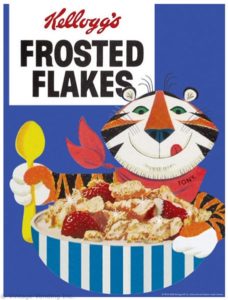
What it isn’t is a fast-growth category. Its sales growth is expected to be around 2%, which is why conglomerates like Kellogg’s and General Mills have put more resources and attention into snacks.
This is something Magic Spoon is hoping to exploit. The bet is that they can eat away at marketshare by appealing to younger, health-conscious consumers, using eCommerce business strategies, and the power of influencer marketing.
Magic Spoon has amassed $100 million in funding to date to pull this off and has reached more than 1 million customers recently. That puts it at the very top of the DTC cereal startups in the space.
It’s easy to dismiss a company like Magic Spoon as a fly on a dinosaur like Kellogg’s, which had more than $2 billion in net cereal sales last year and dominates store shelf space where 90% of CPG sales still take place. This is a matter of perspective, though. Companies like Kellogg’s need to grow off of massive sales numbers while Magic Spoon can subsist off of eating single percentages of marketshare and activating consumers that long ago dropped cereal for avocado toast. And they can do it without the big branding campaigns while pushing out new product faster.
Why Cereal, Though?
A key insight into Magic Spoon’s strategy is to understand the founders’ background. Started by Lewis and Greg Sewitz in 2019, the pair previously started a protein bar company that used crickets as an ingredient, which was acquired in 2018. As a result, the founders have prior experience in starting and operating a consumer food brand targeted to health-focused customers.
Lewis and Sewitz both tout the insight that young adults were hungry for nostalgia. They even use that insight in their advertising.
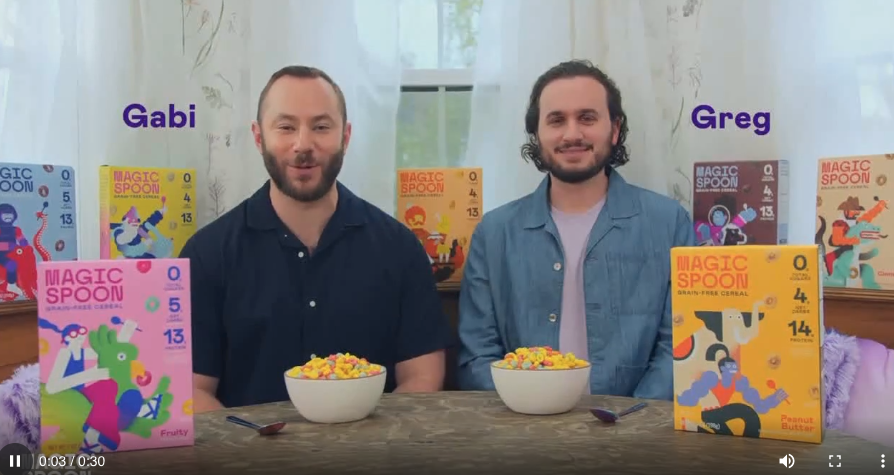
But that isn’t the only insight that appeared to lead them to cereal bowl. It may not even be the most important one.
Lewis noted that the pair knew they wanted to use the economics of a DTC business, and to do so it was important that the product be “light and easy to ship” while lending itself to “daily or habitual consumption so that we could ideally have a subscription model to get a lifetime revenue up.” In other words, much in the way Jeff Bezos used the uniformity of books to launch modern eCommerce, Magic Spoon wants to use the uniformity of the cereal box as a launching pad of moving an old market from primarily sold at checkout counters to online shopping carts.
The other insight was price. As mentioned before, Magic Spoon sells in bundles with a minimum of four boxes, usually resulting in a price of $10 per box. That feels high. But Lewis said that they felt a premium could be commanded if they could provide a healthier version of an existing product category. They came to this conclusion by looking at other categories like deodorant, ice cream, juice, etc. where healthy versions in DTC were able to sell at 2X to 3X the well-known brands in the market.
These insights led to them focusing on cereal. Their insights on marketing is what led to their lead among similar DTC cereal brands.
Get to the Influencers First
Magic Spoon’s marketing strategy is certainly diversifying. But it’s no exaggeration to say that their influencer strategy was the centerpiece.
Lewis stated that launching into the jaws of the emerging COVID-19 pandemic actually led them to an influencer-first strategy. “We sort of noticed early on everyone was spending more time with their phones and influencers were stuck at home not being able to go out to create content so they were happier to get a box of cereal shipped to their house and create some content around that,” he said in a podcast interview.
That influencer strategy broke down into two categories: big names that get paid a referral fee and micro influencers who are sent freebies and asked to share.
Magic Spoon pays “affiliates” a 20% commission on its sales with a minimum of 10 boxes sold through the affiliate to qualify, according to its website. For an influencer with hundreds of thousands to millions of followers, this would be both a relatively easy goal to hit and lucrative. The startup presumably has access to a lot of celebrities with huge followings, counting Nas, Halsey, The Chainsmokers, Shakira, and others among investors.
Lewis has said that the company would send an average of 50 boxes per week to influencers asking them to try the cereal and promote it. About quarter of the influencers they target were in the very large follower category, according to Lewis, meaning around 75% are micro influencers.
That’s led to a flood the zone approach that quickly catapulted Magic Spoon on channels like Instagram, particularly Instagram Stories.
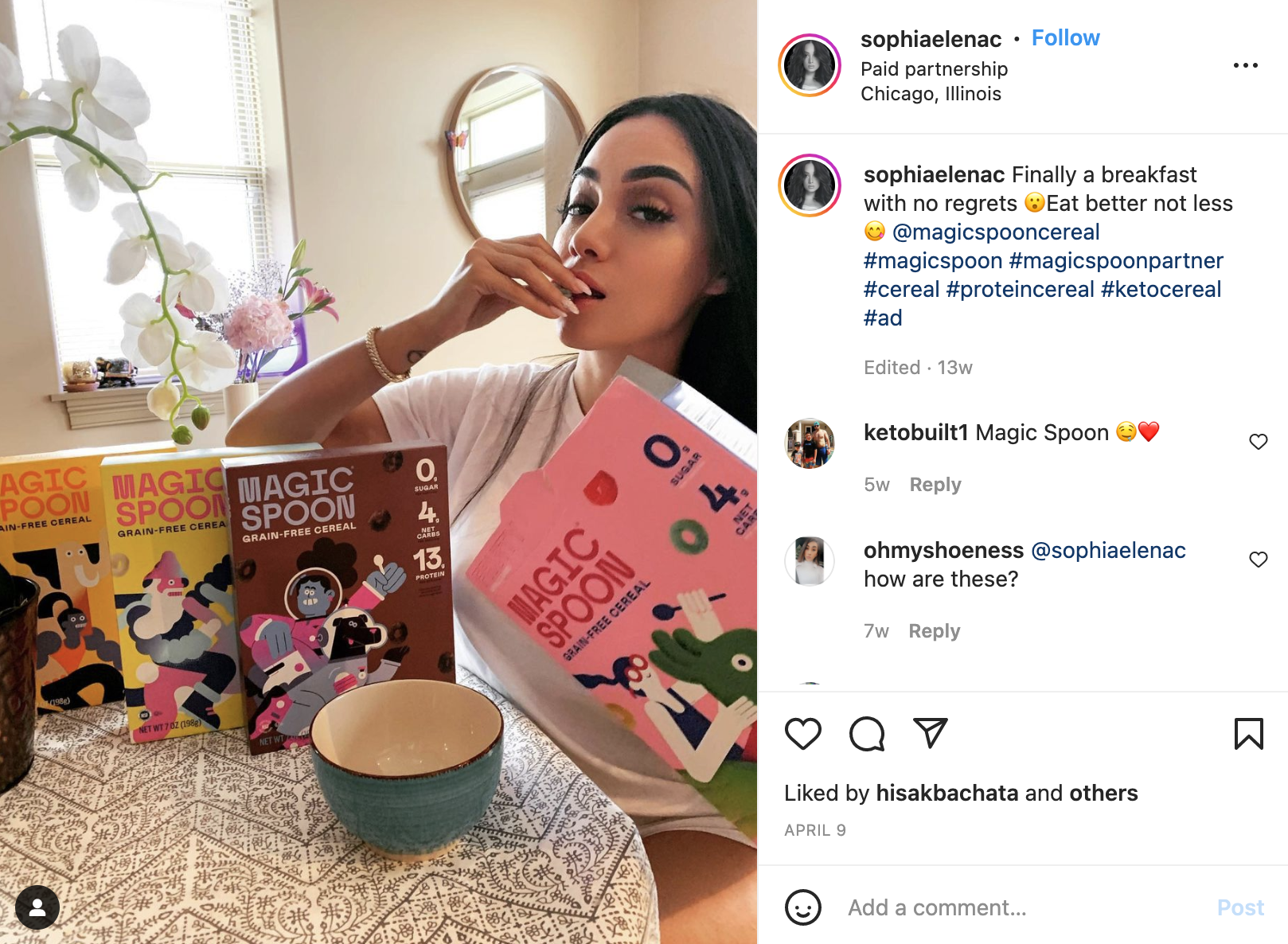
That strategy has paid dividends, maybe in less expected ways. For instance, SEO. Based on an analysis of SEO trends, Magic Spoon is now one of the most searched for terms under the larger keyword of “cereal” and one of the more frequently asked questions.
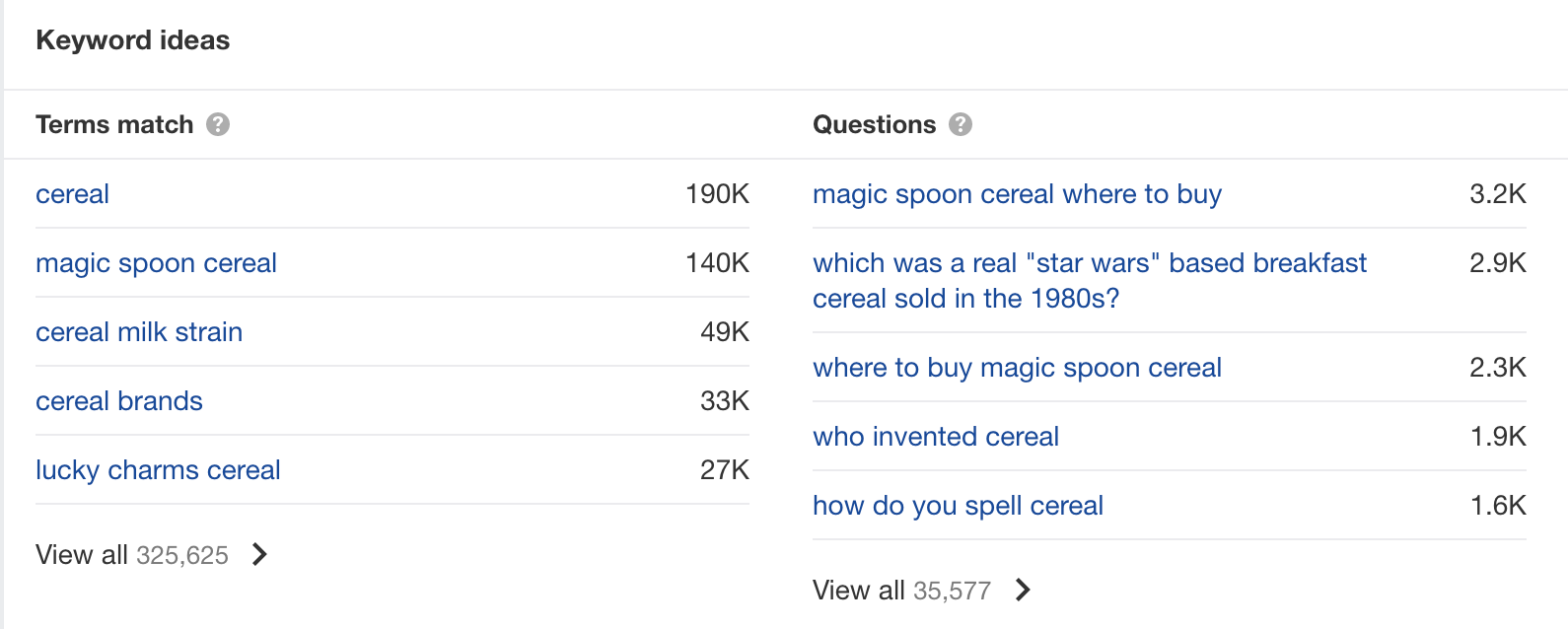
The second most important channel is podcasts, according to Lewis. And the startup is everywhere in podcasts. From Pod Save America and the Mary Trump Podcast to the Lex Friedman and Daily Dad podcasts, they hand out promo codes like candy.
Magic Spoon, of course, also advertises on Facebook and Instagram. These feel a bit more like an extension of their brand creative implementing UGC and social proof ads.
The best way to get a real experience of their marketing strategy, though, is to go on the customer journey.
The First Week
In the first week, I explored Magic Spoon’s website, followed them on Instagram, searched for them on Facebook, and signed up for their email newsletter. The website uses a lot of the standard practices of heavily featuring the product and comparing the cereal to the competition.
The first email came the same day as my sign up, and was heavy on visuals and social proof. The hits on email, though, were light. They didn’t swamp my inbox (thankfully), and I didn’t receive another email until I purchased the product. While I received some retargeted ads on social, this also wasn’t heavy handed.

I also received an SMS promotion. This was also friendly and I only received one.

Abandoned cart
A few days after signing up for email promotions, I selected a bundle of cereals and put it in my cart. I left that cart abandoned for nearly a week.
Surprisingly, I didn’t receive a single email (I checked SPAM and promotion filters). This isn’t to say the marketing team doesn’t have an abandoned cart strategy, especially since I was able to find an example of an abandoned cart email elsewhere. But it seems like an opportunity to fill a gap in the customer journey.



Retention Marketing
In the time since purchase, I’ve received one SMS message and six emails from Magic Spoon. These have used standard playbook approach of eCommerce marketing. There was an email with FAQs, a message from the founders explaining their vision, new product offerings and a news mentions. Curiously, only one message referenced my purchase, and in vague terms.
It’s been nearly two weeks since my first purchase, and I haven’t received an email or SMS asking me to buy more, offering a promotion for a subscription, or request to review or share via social. This feels like an obvious area for optimization and personalization to drive repeat purchasing loyalty.
Of course, there’s always the balance of not overdoing it. But compared to OffLimits and Schoolyard Snacks, Magic Spoon is way less aggressive in its email and SMS marketing.
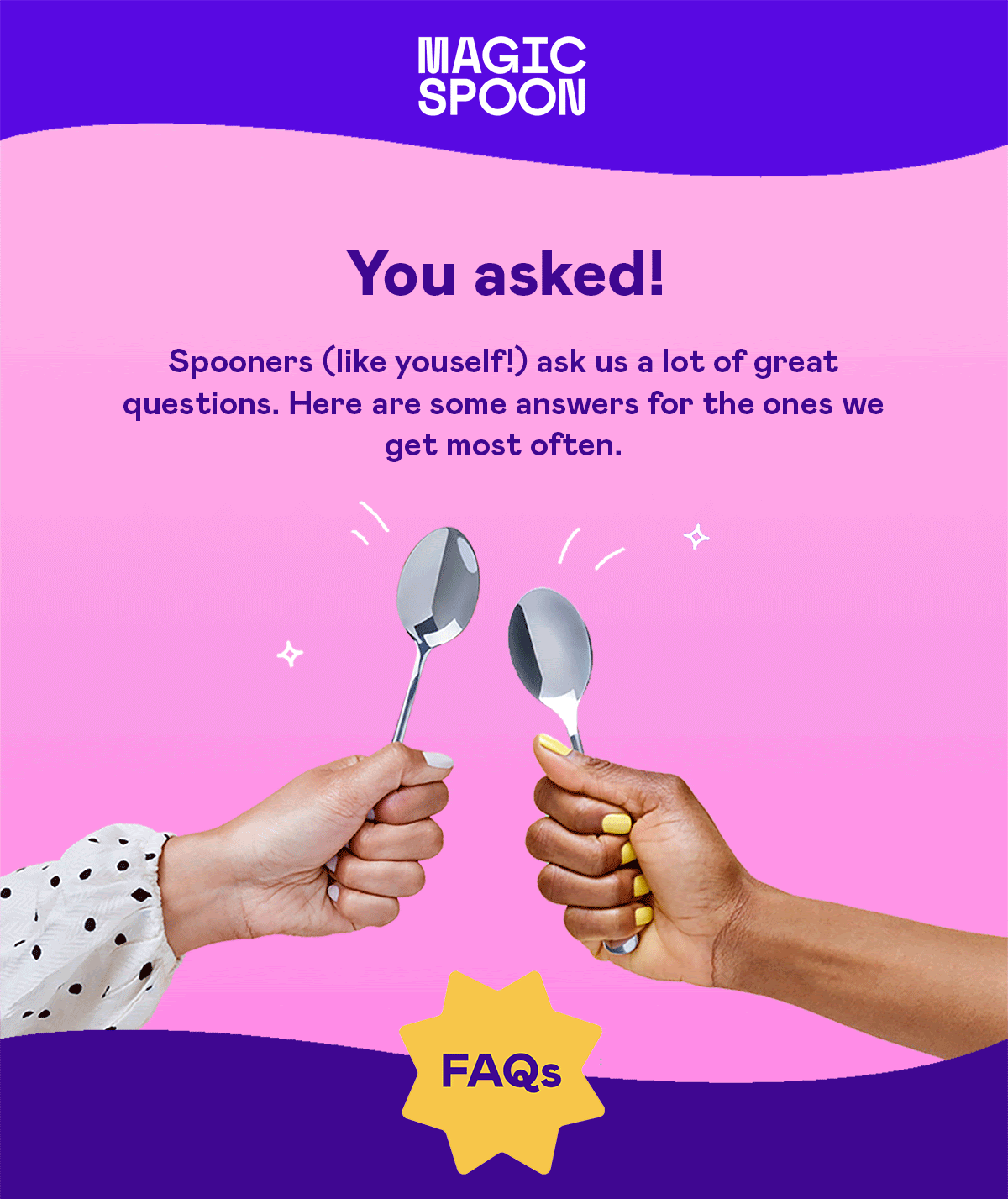

An Early Lead with Lots of Room to Grow
Thanks to its smart early moves targeting influencers, focusing on a specific market, and prior executive team experience in DTC, Magic Spoon has built a massive lead in the cereal DTC market. And with lots of funding and a launch onto store shelves at Target, it’s poised to eat more marketshare from the legacy brands.
But there is still ample opportunity to grow. My personal experience in a customer journey suggest that the startup has underinvested in personalization and segmentation, particularly in email channels to existing customers. If they’ve crossed the 1 million customer mark, there would seem a lot of opportunity to build loyalty and higher LTV through subscriptions.
Want to make sure you never miss a Mystery Shopper breakdown? Subscribe.




